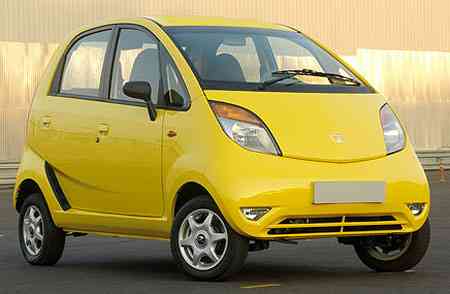So, a promise has been fulfilled by good ol’ Ratan Tata. The one that he had made to the world and more importantly to the Indians some 6 years back, of a car that will cost some $2000. Nano is now ready to ferry 5 Indians safely 23.6 kms for every litre of petrol and will apparently hit the roads by June/July 2009, initially in limited numbers. Subsequently, the price might also be revised later (though, there is little scope for it after all the USP of the vehicle is its price).
the world and more importantly to the Indians some 6 years back, of a car that will cost some $2000. Nano is now ready to ferry 5 Indians safely 23.6 kms for every litre of petrol and will apparently hit the roads by June/July 2009, initially in limited numbers. Subsequently, the price might also be revised later (though, there is little scope for it after all the USP of the vehicle is its price).
There are a lot of hopes pinned on Nano, not only from the automotive sector but from the economy from a whole. Many analysts are hoping and at times proclaiming that Nano could provide the kick-start the economy so badly needs. While on the other hand there are scores and scores of environmentalists, who are bemoaning the launch of Nano, terming it to be an eco-disaster for India in terms of emissions and infrastructure.
I for one am reminded of the mobile revolution that took shape in India over the past decade. Let me share with you a personal anecdote. It was at the turn of the millennium and I was in Delhi during that time. I was using a Airtel number, subsequently I had shifted to Idea. Since, my folks and my better-half was in Mumbai, I was an extensive user of the cellular services. In those days, I remember paying money for the ‘airtime/talktime’ rather than making or receiving calls. Thus, my operator used to charge me on a 30 second pulse, irrespective of whether I called or someone else did.

The mobile space changed completely when Mukesh Ambani launched the Reliance CDMA services, launching a phone that was downright cheap in terms of acquisition cost and running costs. Hundreds of thousands of customers thronged to Reliance to acquire those phones.
Almost overnight there was a major correction. The call rates dropped, there were suddenly a flurry of offers from various operators. And in due course of time, talktime gave way to calls made or recieved. The result could be guaged in my mobile bill itself, whereas earlier it used to run up to around Rs. 5,000 every month, within a matter of months it dropped to around Rs. 3,000, even when the usage was more or less the same.
I was quite angrered by the way the mobile operators fleeced the market by forming a cartel. If they could reduce the prices so drastically now, why didn’t they make even nominal reductions earlier. Hence, Mukesh Ambani and his Reliance Mobile must be given credit for engineering the mobile revolution
in India.
I somewhat think, the Nano will do for automotive industry what Reliance had done to the mobile space. In the face of such low prices, the Marutis and the Hyundais of the world will have to buckle and reduce the costs drastically. Already there are quite a few auto giants that have announced their own “low-cost” car projects. But even so, Nano is bound to bring the bigger cars to their knees as well.
There is a proverb in Hindi, which goes something like this, dekhan mein chottan lage, ghav kare gambhir, that can be literally translate as: by the looks of it, it might seem small and minuscule but when then it is quite capable of making serious wounds. And that is what I firmly believe of Nano. Beware, the Marutis and Hyundais of the world, looks can be deceptive.
